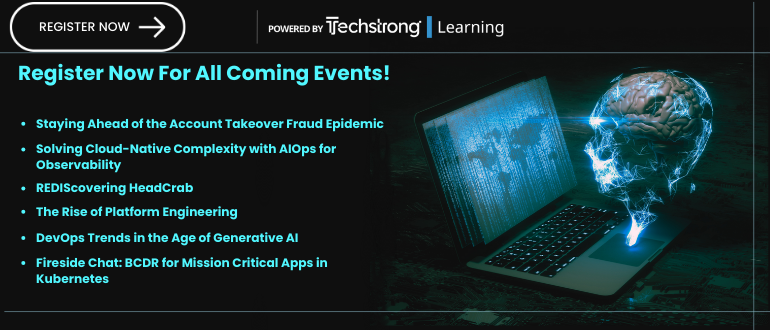
2024-2-5 23:0:58 Author: securityboulevard.com(查看原文) 阅读量:13 收藏
According to research from VMware Carbon Black, ransomware attacks surged by 148% during the onset of the COVID-19 pandemic, largely due to the rise in remote work. Key trends influencing the continuing upsurge in ransomware attacks include:
- Exploitation of IT outsourcing services: Cybercriminals are targeting managed service providers (MSPs), compromising multiple clients through a single breach.
- Vulnerable industries under attack: Healthcare, municipalities and educational facilities are increasingly targeted due to pandemic-related vulnerabilities.
- Evolving ransomware strains and defenses: Detection methods are adapting to new ransomware behaviors, employing improved heuristics and canary files, which serve as digital alarms, deliberately placed in a system to entice hackers or unauthorized users.
- Rise of ransomware-as-a-service (RaaS): This model enables widespread attacks, complicating efforts to counteract them. According to an independent survey by Sophos, average ransomware payouts have escalated from $812,380 in 2022 to $1,542,333 in 2023.
Preventing Ransomware Attacks
To effectively tackle the rising threat of ransomware, organizations are increasingly turning to comprehensive strategies that encompass various facets of cybersecurity. One key strategy is employee education, fostering a culture of heightened awareness regarding potential cybersecurity threats. This involves recognizing phishing scams and educating staff to discern and dismiss suspicious links or emails, mitigating the risk of unwittingly providing access to malicious entities.
In tandem with employee education, bolstering the organization’s defenses against ransomware requires the implementation of robust technological measures. Advanced malware detection and filtering systems play a crucial role in fortifying both email and endpoint protection. By deploying these cutting-edge solutions, companies can significantly reduce the chances of malware infiltration. Additionally, the importance of fortified password protocols cannot be overstated in the battle against ransomware. Two-factor authentication and single sign-on systems provide formidable barriers, strengthening password security and rendering unauthorized access substantially more challenging for cybercriminals.
An often overlooked yet critical component of ransomware mitigation involves the establishment of immutable, offsite backups. Employed in tandem with regularly practiced restoration procedures, these backups safeguard against data loss in the event of a ransomware attack. Additionally, coupling these backup strategies with robust data loss prevention software serves as a formidable defense, limiting the impact of potential data exfiltration attempts. By integrating these multifaceted strategies, organizations can construct a more resilient defense against ransomware threats, emphasizing proactive measures to mitigate risks rather than merely reacting to potential attacks.
Preparing for Data Center Security Threats in 2024
Data centers, rich in critical data, are prime targets for cybercriminals. Despite robust security measures, vulnerabilities persist. IT professionals are urged to bolster defenses in data center operations, potentially incorporating hardware-based solutions alongside software defenses.
To prepare for the top security threats of 2024, IT leaders must prioritize fortifying data centers against increasing ransomware and cyberattacks. Recognizing data centers as repositories of valuable personal, financial and intellectual data, it’s essential to enhance existing security measures. The focus is shifting toward integrating robust, hardware-based approaches alongside software defenses to reinforce digital barriers against cybercriminals.
This strategic shift is underscored by the emergence of hardware-based root of trust (RoT) systems that heavily rely on artificial intelligence (AI) technologies. As cybersecurity threats evolve, AI algorithms have become crucial in processing and assimilating vast amounts of threat intelligence into actionable data. These systems, operated through trusted control/compute units (TCUs), offer advanced management controls at the core hardware level, enhancing the zero-trust practices beyond current capabilities.
The increasing focus on cybersecurity from government and industry leaders further emphasizes the need for more secure networks. The next generation of hardware-anchored, AI-driven security platforms promises to establish a more robust zero-trust architecture. This approach not only strengthens key storage and management but also assures a more secure future for data centers, thereby safeguarding digital communications across various sectors. The integration of effective AI-enabled zero-trust practices provides a critical step in addressing the complex cybersecurity challenges that lie ahead.
The Future of Cybersecurity is AI-Driven Platforms
AI-driven security platforms are shaping the future of data network security. These platforms facilitate advanced key storage and management, ensuring more robust zero-trust architectures.
A new generation of hardware-based root of trust, employing AI technology, is critical to the future of cybersecurity. AI algorithms can effectively process threat intelligence data, enhancing zero-trust practices at a fundamental hardware level. This approach addresses the dynamic nature of the threat landscape.
AI in Cybersecurity is a Double-Edged Sword
AI plays a significant role in cybersecurity, and its formidable power can be wielded defensively and for nefarious purposes. The application of AI in threat detection, relying on machine learning (ML), stands as a cornerstone in identifying and preempting potential risks. However, the accessibility of AI-powered hacking tools has empowered less sophisticated cybercriminals, enabling them to orchestrate advanced attacks with increasingly greater ease. The growing accessibility of AI tools and applications underscores the challenge of securing intelligent systems against potential exploitation, emphasizing the paramount need to fortify their defenses to prevent misuse and manipulation by malicious actors.
Future Perspectives on AI and Cybersecurity
Now and in the future, AI technology can be used to alleviate the cybersecurity workforce shortage by automating threat detection. It also has the potential to train cybersecurity professionals and enhance skill development in areas like code reverse engineering.
As the cybersecurity landscape evolves, organizations must adapt their strategies to combat emerging threats. Emphasizing employee training, robust technology defenses and the innovative use of AI are crucial steps. Simultaneously, the industry must remain vigilant against the misuse of AI, ensuring that cybersecurity defenses stay ahead of ever-evolving threats.
Recent Articles By Author
如有侵权请联系:admin#unsafe.sh
